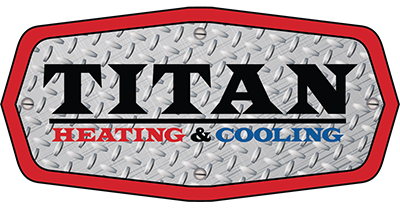
9 Steps to Follow Before Turning On Your Air Conditioner
Believe it or not, summer is right around the corner. Sunshine, blue skies, and warm weather are just weeks away! As exciting as that is, once it starts to warm up out there, you’ll want to make sure your air conditioning unit is ready to keep your home cool and comfortable. Take a few steps now to make sure your air conditioner is in tip top shape so that when those warm temperatures hit, you can simply flip the switch for cooler indoor air. Follow these 9 steps before turning on your air conditioner this year.
1. Inspect Air Vents and Ductwork
Move items that are on or near air vents that could block the flow of air, such as furniture or drapes. Take a peek inside the grate to check for any items that have fallen through. Lift up the grate to remove items if needed.
Check exposed ductwork for wear and tear. A few common issues to look for are:
- Gaps between duct sections
- Fallen duct sections
- Disconnected joints
- Tears in flexible duct sections
Seal up any problem areas, and contact a professional to make the necessary repairs. Worn ducts can be a major source of cooling loss and system inefficiency, leading to less efficient cooling, higher energy bills, and future air conditioning repairs.
2. Change Air Filter
Your HVAC air filter traps contaminants that your system removes from the air as it runs. Once your filter becomes too full, it can no longer trap these contaminants, and excess dust and debris settle within your HVAC system. This in turn contributes to malfunctions or even breakdowns.
To prevent this and maintain good air flow throughout your system, your air filter should be changed every 2-3 months or so. You should change the filter more often if you have indoor pets or family members with asthma or allergies. It’s a good idea to get in the habit of checking your air filter every month and changing it when it appears clogged.
3. Check Drain Line
Your system should have a drain by the indoor cooling coil (often mounted above the furnace). The drain line can become clogged with dirt buildup as the system runs. If that happens, water could back up in the drain pan, potentially resulting in water damage to your home. You can flush the drain using bleach and water (one cup of bleach to one gallon of water), or have a professional clean it out for you.
4. Upgrade Your Thermostat
If your thermostat is outdated, consider installing a new programmable or smart thermostat to save both energy and money. Replacing an old, inefficient thermostat with a new one can result in more even temperature regulation throughout your home. A new programmable or smart thermostat will be more efficient and better able to respond to changes in outdoor temperatures.
5. Inspect the Outdoor Condenser Unit
Check the panels that encase your unit’s electrical connections, and call for repair if any are missing or misaligned. Harsh winter weather and storms with high winds can damage these panels or knock them loose. Running your air conditioner with missing or damaged panels can pose a major safety risk.
6. Clear Away Debris and Trim Landscaping Around Exterior Unit
Leaves, twigs, grass clippings, or other debris can block the components of your outdoor A/C unit, resulting in reduced performance. Clean the area surrounding the unit, removing any blockages. Use a light spray of water to rinse away built-up dirt, pollen, and grime. Keeping your air conditioner and the area around it clean and free of obstacles will help promote good air flow and maximum cooling efficiency.
7. Check Insulation on Refrigerant Lines
Your outdoor unit has coolant lines that run to your home, and these lines should be wrapped in a sleeve of insulation. Proper insulation improves the efficiency of the system. If the insulation is cracked, peeling or frayed, contact a professional to repair or replace it before turning on your air conditioner.
8. Test Your System By Turning On Your Air Conditioner
Once you’ve ensured that all of the parts of your system are in good shape, test your system (even if it’s not quite warm enough out there yet). To do this, first lower your thermostat to your desired temperature, then turn the system on.
Once it is on and running, go outside to listen to the fan in the condenser. Make sure it is running and it doesn’t make irregular sounds. While you’re out there, check to ensure the air coming out of the top of the unit is warm (this is where the warm air from inside your home is vented). Let the system run for at least 10-15 minutes so you can feel the air throughout your home beginning to cool off. Once you’ve confirmed it is working throughout every room in your home, you can turn it off again.
9. Schedule Preventive Maintenance with Titan
At least once a year, schedule HVAC maintenance to ensure your system is in top shape and running as efficiently as possible. Preventive maintenance helps catch small issues before they become big ones so you can avoid unexpected breakdowns and the costs that come with them. Regular maintenance can also extend the life of your air conditioner, maximizing your investment and delaying replacement costs. In addition, if your air conditioning unit is covered by a warranty, routine maintenance could be a condition of the warranty (check with your manufacturer to confirm).
Even though the dog days of summer may seem far away, those hot, muggy days will be here before you know it. Contact Titan today at 651-714-8931 to schedule your HVAC maintenance or air conditioning service and make sure your system is ready to keep you cool all summer long.


